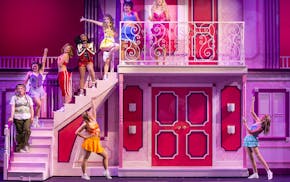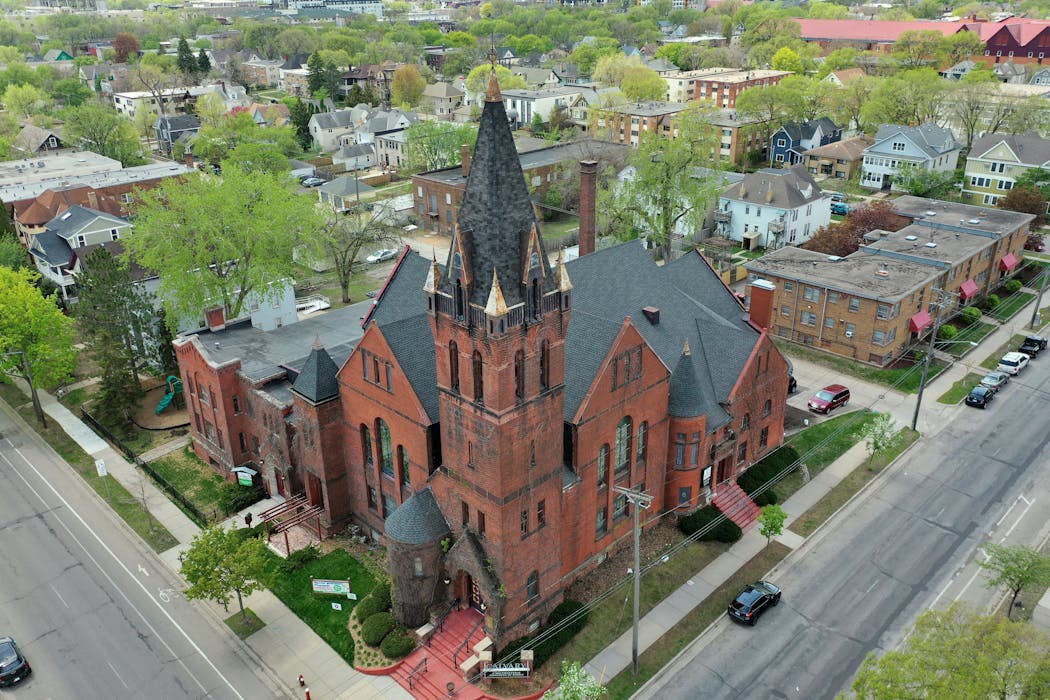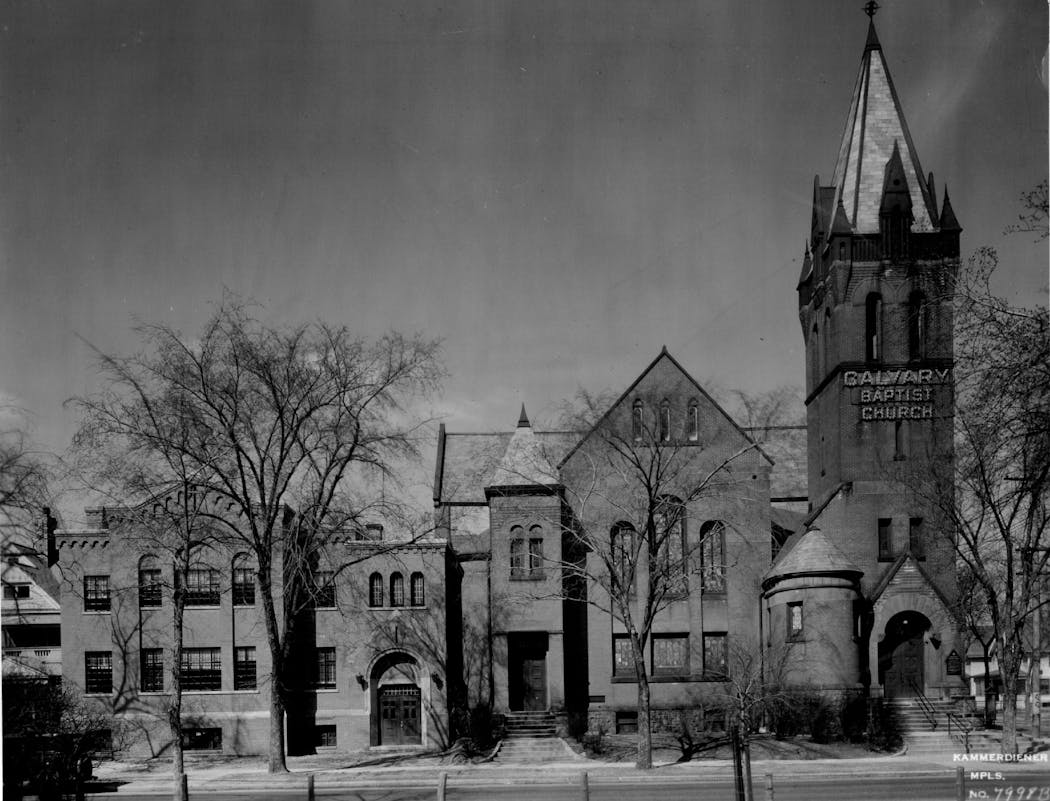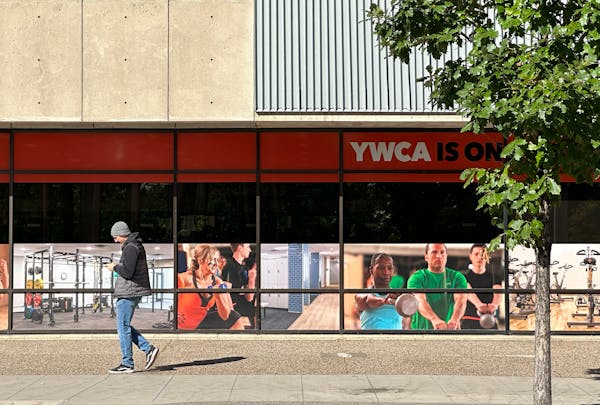It was a sign from above.
Dean Caldwell-Tautges, the church administrator at Minneapolis' Calvary Baptist Church , was brought up short on a recent Sunday when he saw a chunk of sheet metal from the 121-year-old building's steeple on the ground.
Message received, said Senior Pastor Jeff Cowmeadow.
The church had already hired independent building experts and had drone photos taken of the 110-foot tower, which revealed that work to restore the soaring steeple — the tallest elevated structure in the Whittier neighborhood — "needs to happen," said Cowmeadow.
Many old city churches close when necessary repairs become too big a financial burden as memberships shrink and costs rise. But the "old gal," as Cowmeadow calls Calvary, has a chance to get the TLC she needs.
The historic church at 26th Street and Blaisdell Avenue S. recently celebrated its 140th anniversary and has a thriving, growing congregation. Church leaders recently secured a $200,000 grant from the National Fund for Sacred Places and kicked off a steeple fundraising campaign to raise a total of $1 million.
Their goal is to renovate the steeple from top to bottom over four months starting next summer, including repointing, replacing bricks, shingling the steep roof and repairing the sheet metal. They also plan to add new spotlights.
The church was one of only 16 to get a Sacred Places grant, out of more than 400 applicants, Caldwell-Tautges said. In order to qualify, he needed to show that Calvary was architecturally and historically significant and that the church building shares space with the wider community. Perhaps most difficult today, as congregations in Minnesota and around the country shrink and close, he had to prove that its flock is vibrant.
Calvary — one of the last remaining Minneapolis churches that date back to the 19th century still in operation — has come a long way since the late 1950s, when members voted to stay put instead of moving to the suburbs like dozens of other city congregations. In the following decade, its numbers dwindled drastically.
Calvary, which has a sign over the door calling the church "a multicultural movement of people," has since become a popular choice for neighborhood families. It's now filled with about 200 people on a Sunday, including around 70 kids, said Caldwell-Tautges.
"We actually grew over COVID. We are full of young, talented, amazing people, strong families, people from the neighborhood," said Cowmeadow.
On Sundays, he opens the mic for anyone to come forward to give a praise, share a pain or protest something. A preschool fills one part of the building, and the church's commercial kitchen leases space to area small businesses such as Thomasina's Cashew Brittle.
A storied history
The "old gal" also has an architectural pedigree that isn't too shabby. The building, which landed on the local historic landmark list in 1995, was listed on the National Register of Historic Places in 2021.
Built from 1889 to 1902, the brick Romanesque Revival building was designed by Minneapolis architects Warren Hayes and Harry Wild Jones, the pair who were behind the city's Scottish Rite Temple in Lowry Hill.
Hayes was the city's most prominent church architect in his day, with designs that "conveyed a symbol of permanence" in a fast-growing Minneapolis, according to his city bio.
He was still working on the Calvary project when he died in 1899. Jones took over. His striking work — including the Washburn Park water tower and the domed memorial chapel at Lakewood Cemetery — can be found throughout Minneapolis.
For years, Cowmeadow and other church leaders have focused on renovating and preserving the old building's interior. But now they want to make sure the exterior is in shape to last for a new generation. The steeple hasn't seen much maintenance since 1903.
Beauty, said Cowmeadow, is something a church like Calvary Baptist can and should provide.
"We're not going to put gold on it. We're not going to put in marble floors. But churches have a responsibility to be, within reason, a beautiful place. Because a lot of stuff in this world is not beautiful," he said.
"A restored steeple that is lit at night is pointing up toward something. I think we need to raise our eyes again. I really do."

For 'Legally Blonde' star, 'being underestimated is her secret superpower'

Restaurant openings and closings in the Twin Cities

Minnesota's Amy Thielen launches old-fashioned radio show for food lovers
Yuen: How success has pushed Minnesotans off sidelines in trans athlete debate




